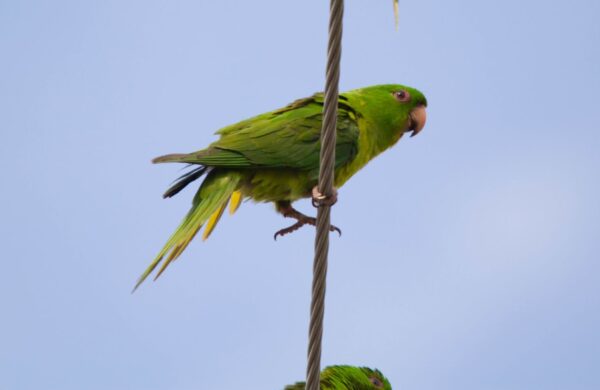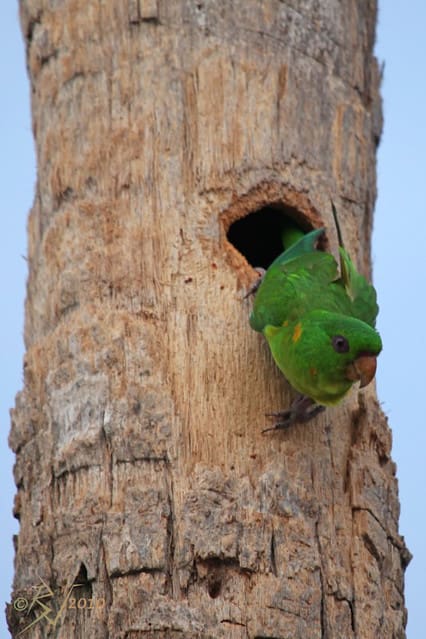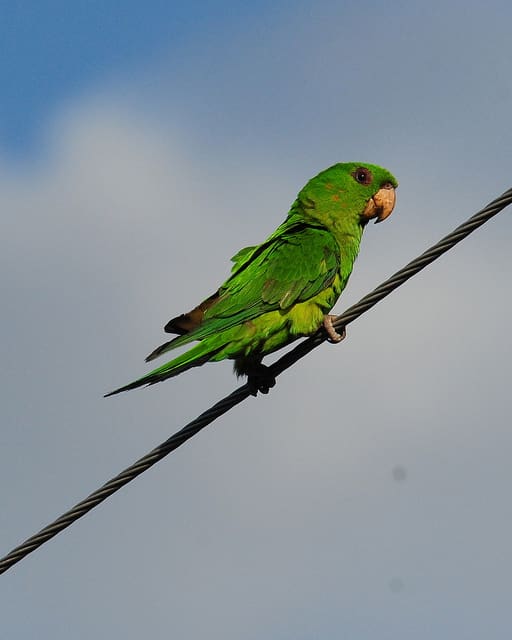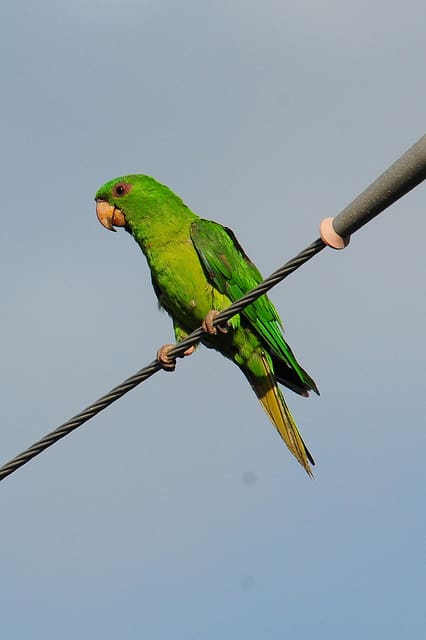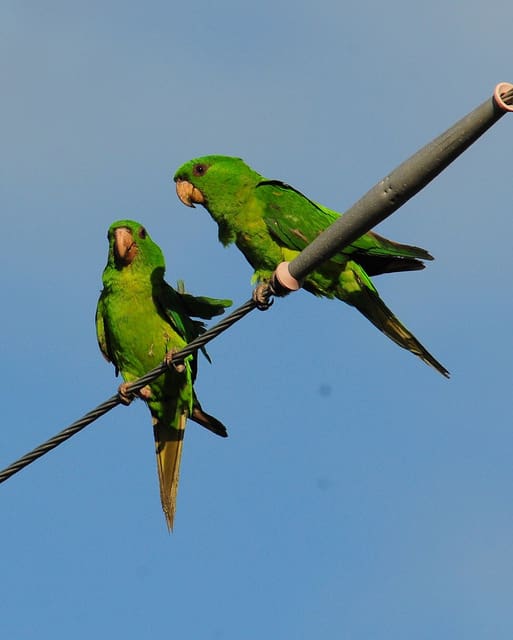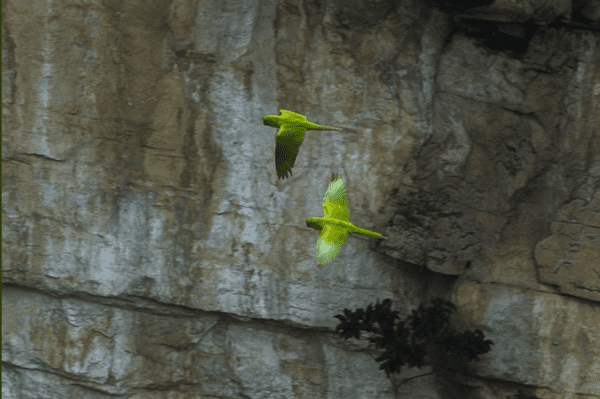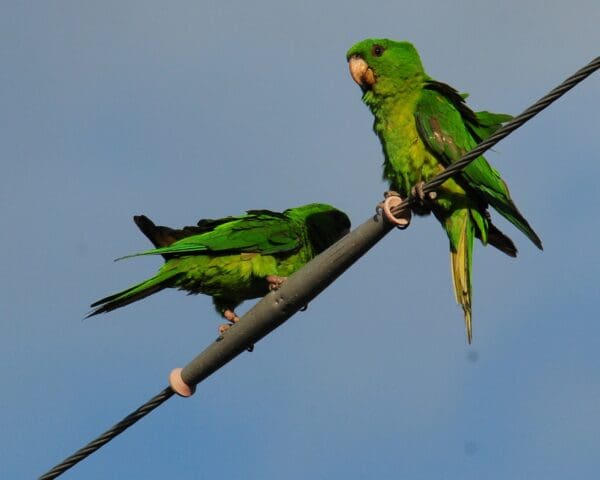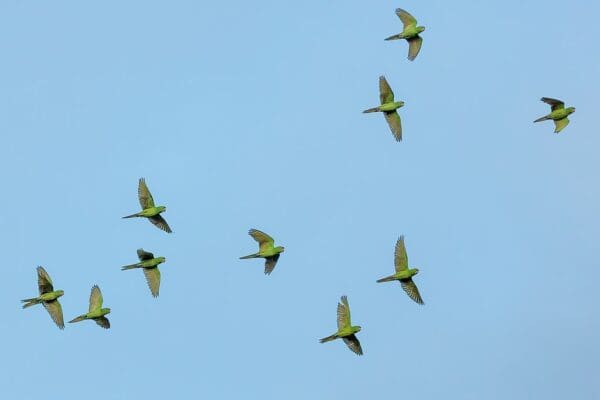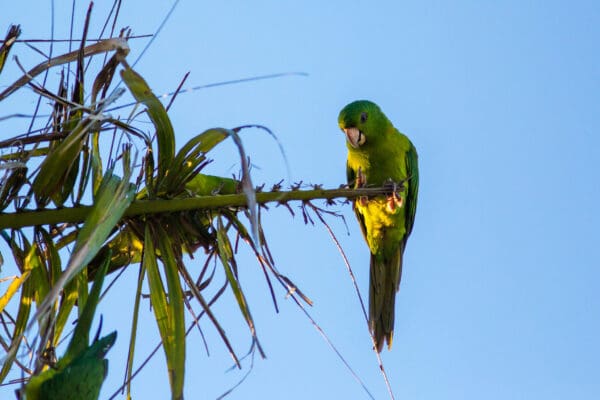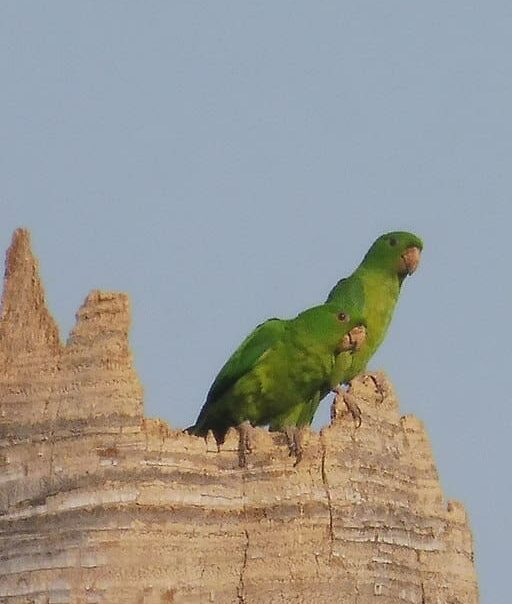Green Conure
Also known as:
Green Parakeet, Mexican Green Conure
Also known as:
Green Parakeet, Mexican Green Conure
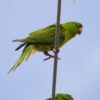
![© Walker Wilson [CC BY-SA 2.0] via Flickr A wild Green Conures clings to a tree trunk near a nest cavity](https://parrots.org/wp-content/uploads/2023/01/wpt_Green-Conure_1309-8-100x100.jpg)
![© Vince Smith [CC BY-NC-SA 2.0] via Flickr A wild Green Conure perches on a wire](https://parrots.org/wp-content/uploads/2023/01/wpt_Green-Conure_1309-4-100x100.jpg)
![© Vince Smith [CC BY-SA 2.0] via Flickr A wild Green Conure perches on a wire](https://parrots.org/wp-content/uploads/2023/01/wpt_Green-Conure_1309-2-100x100.jpg)
![© Vince Smith [CC BY-SA 2.0] via Flickr Wild Green Conures perch on a wire](https://parrots.org/wp-content/uploads/2023/01/wpt_Green-Conure_1309-1-100x100.jpg)
![© Francesco Veronesi [CC BY-SA 2.0] via Flickr Wild Green Conures fly near the sides of a giant sinkhole](https://parrots.org/wp-content/uploads/2023/01/Green-Conures-100x100.png)
![© Vince Smith [CC BY-SA 2.0] via Flickr Wild Green Conures perch on a wire](https://parrots.org/wp-content/uploads/1990/05/Green-Conure-Vince-Smith-100x100.jpg)
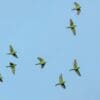
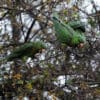
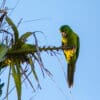

DID YOU KNOW?
The Green Conure has been reported nesting in a colony in a cave in E Mexico.

Psittacara

holochlorus
Size:
30 cm (11.7 in)
Weight:
230 g
Subspecies including nominate:
three: P.h. holochlorus, P.h. brewsteri, P.h. strenuus
Colour Adult:
P.h. holochlorus: Both adults green in general; green/yellow on underparts; scattered red feathers on heads of some birds; blue tinge to primary coverts and outer webs of flight feathers; dull yellow/green underwing coverts; olive/yellow underside of flight feathers. Beak horn-coloured. Eye ring bare and pink/grey. Eye orange/brown.
P.h. brewsteri: Both adults as in holochlora, but a darker green with less yellow; crown with blue wash.
Colour Juvenile:
P.h. holochlorus: As in adults but with brown eye.
Call:
Calls made in flight are rolling, shrill and harsh; also deeper, stronger notes.
More Information:
Content Sources:
CITES
BirdLife International
Cornell Lab of Ornithology/Birds of the World
Parrots: A Guide to Parrots of the World, Juniper and Parr, 1998
Parrots of the World, Forshaw and Cooper, 1989. 2010 edition
Parrots of the World, Forshaw, 2006.
Lexicon of Parrots, Thomas Arndt.
Parrots in Aviculture, Low, 1992.
Captive Status:
Rare
Longevity:
Probably up to 30 yrs.
Housing:
Enclosure or suspended aviary, minimum length 2-3 m (6.5-9.8 ft).
Diet:
Fruit such as: apple, pear, orange, cactus fruits, guava, mango, pomegranate, forming at least 30 percent of diet; vegetables such as: carrots, celery, green beans and peas in the pod; fresh corn; green leaves such as: Swiss chard, lettuce, kale, sowthistle, dandelion, chickweed; spray millet; small seed mix such as: canary, millet and smaller amounts of oats, buckwheat, safflower and a little hemp; soaked and sprouted sunflower seed; cooked beans and pulses and boiled maize and complete pellet.
Enrichment:
Provide plenty of bird-safe, unsprayed flowering, fir, pine, willow or elder branches, wooden block or vegetable-tanned leather toys, heat sterilised pine cones. Enjoys bathing so provide overhead misters or shallow water bowls.
Nest Box Size:
Diagonal nest box 25 cm x 40 cm x 30 cm (10 x 16 x 12 in).
Clutch Size:
3-4
Fledging Age:
8 weeks
Hatch Weight:
—
Peak Weight:
—
Weaning Weight:
—
World Population:
200,000 mature individuals, decreasing.
IUCN Red List Status:
Least Concern
CITES Listing:
Appendix II
Threat Summary:
Not globally threatened. An overall decline has occurred due to forest loss to agriculture and mainly local trade.
Range:
P.h. holochlorus: E Mexico, from E Nuevo Leon and Tamaulipas to C Veracruz and from SE Veracruz and E Oaxaca to E Chiapas, with seasonal movements to Pacific slope on Isthmus of Tehuantepec.
P.h. brewsteri: Highlands of NW Mexico, in Sonora, N Sinaloa and SW Chihuahua.
Habitat:
Found up to 2500 m (6560 ft) in various wooded habitats except tropical rainforest.
Wild Diet:
Feeds on seeds of Mimosa, fruits of Myrica mexicana, Ehretia anacua, Ceitis laevigata, Washingtonia and Melia azedarach and maize. Also buds of Populus and acorns Quercus, along with wool-bearing gall wasp larvae in Texas birds.
Ecology and Behaviour:
Seen in large noisy flocks outside the breeding season, particularly where food abundant. Nest is usually located in tree cavity, rock crevice, hole in building or termite mound.
Clutch and Egg Size:
3-4 eggs, 38.0 x 25.5 mm (1.5 x 1 in).
Breeding Season:
January-August depending on location. Nest is in tree cavity, termitarium or, colonially, in rock crevices in cliff faces and caves.
